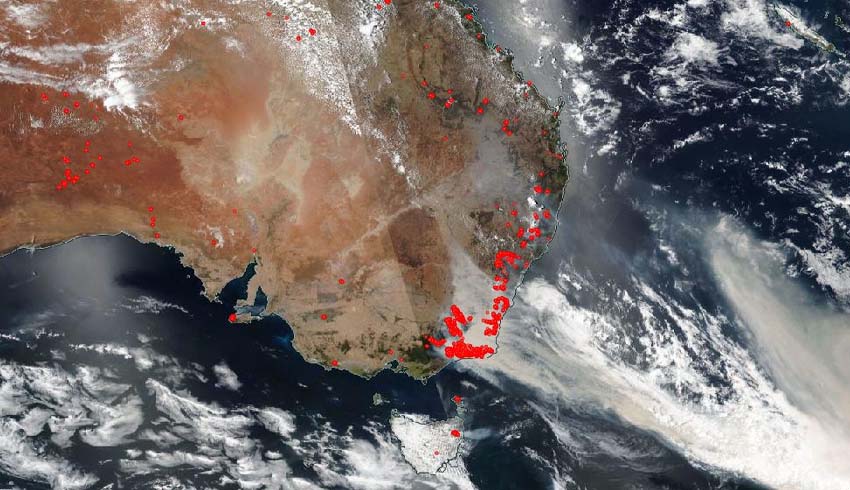Answering the call to help, the US Regional Satellite Communications Support Center-Pacific (RSSC-PAC) delivered communications planning support to the Australian and New Zealand Defence Forces for Operation Bushfire Assist.
RSSC-PAC is responsible for planning Wideband Global Satellite System (WGS) SATCOM missions and supports all Australian and New Zealand Defence Forces operating in the Pacific area of responsibility on a daily basis.
But for the bushfires crisis, Australia needed more and made an immediate Satellite Access Request to support units participating in the bushfire assist effort.
“In response to the wildfire crisis in Australia, we ensured rapid response and quick turnaround of satellite resource requests, ensuring that Australian military elements were able to communicate and coordinate response efforts on the ground,” said Robert Driskell, Wideband Cell chief at RSSC-PAC.
“We started to receive requests for satellite resources supporting this effort January 5 and our support is expected to last until early February.
“All support efforts undertaken by RSSC-PAC have occurred remotely from our home station at Wheeler Army Airfield in Hawaii,” he said.
While the US can’t say just how many personnel have participated, it’s proud to have been able to help.
“These efforts toward international cooperation embody the American desire to use our immense resources to aid our allies and promote peaceful collaboration globally,” he said.
The WGS constellation is the key component of Australian Defence Force satellite communications capability. Australia is an international partner in the WGS program through funding of satellite WGS-6, which gives us proportional access to the network.
Other international partners are Canada, Denmark, Luxembourg, The Netherlands and New Zealand, which contributed to the cost of WGS-9.
The WGS constellation provides fast broadband communications for the US military and allies. The first WGS satellite was launched in 2007, with capability steadily improved such that WGS-10 can deliver download speeds of up to 11 gigabits per second.
However, this remains a US-controlled system, and the ADF is considering options to acquire a dedicated SATCOM capability.
Driskell said RSSC-PAC supported Australian requests for SATCOM services over the WGS as part of a joint memorandum of understanding between the US and Australia.
He said the ADF was the single largest international WGS partner signatory for the WGS program.
“As a part of the MOU, RSSC-PAC’s role is to respond to resource requests from partner nations, including Australia and New Zealand,” Driskell said.
“We received SATCOM requests from both the Australian and New Zealand Defence Forces supporting missions in Australia aiding in bushfire response efforts.
“Once we received these requests for support, we were able to allocate resources over the WGS communications satellite constellation in less than 24 hours, ensuring rapid response for units on the ground. To date, we have planned 10 missions for both Australian and New Zealand Defence Forces providing direct support to this effort.”
The ADF formed three Joint Task Forces – JTF 646, 1110 and 1111 – across three different territories to combat the bushfires, mobilising several thousand full-time and reserve personnel to provide land, sea and air support.
Troops were deployed throughout NSW, the ACT, South Australia, Tasmania and Victoria. HMAS Choules and HMAS Adelaide provided direct support to humanitarian and evacuation efforts.
“In response to the wildfire crisis in Australia, we ensured rapid response and quick turnaround of satellite resource requests, ensuring that Australian military elements were able to communicate and coordinate response efforts on the ground and at sea,” said Oliver Uson, a wideband planner.
“We have received multiple satellite access requests over the last couple of weeks. As soon as we got the satellite access request from the Australians, we started the planning process with a 24-hour or less turnaround.”

